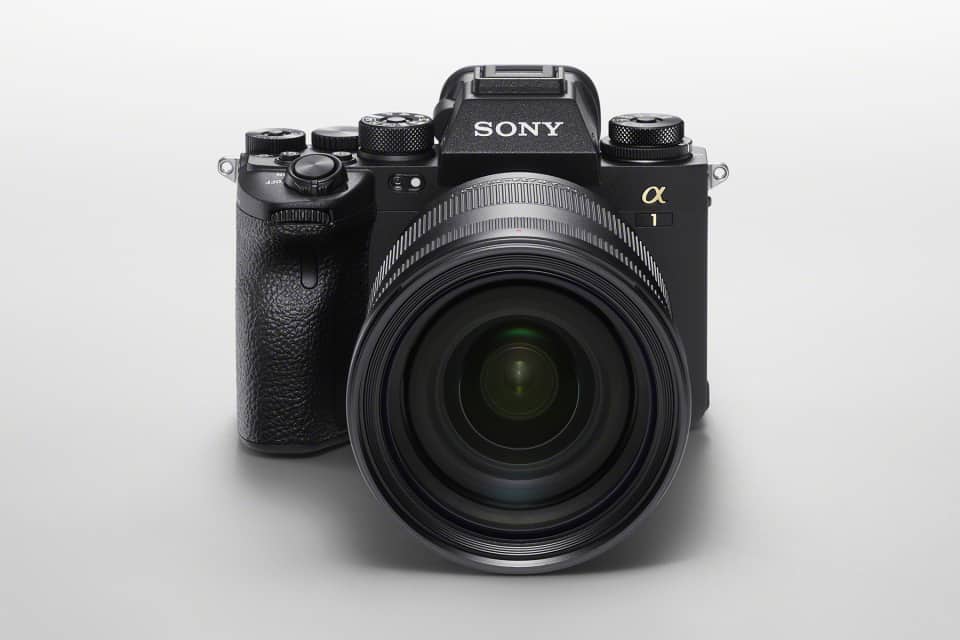Sony has just dropped a bomb on the camera world with the launch of the A1, its new flagship full-frame mirrorless camera with some breakthrough features. Thanks to a new 50-megapixel Exmor RS stacked CMOS sensor and the cutting-edge Bionz XR processor, it offers 30 fps shooting speeds, 8K 30P/4K 120P video and a lot more. With all that, it can easily take on Canon’s R5, though it comes at a significantly higher price.
The A1’s key feature might be its incredible speeds. It can shoot 50.1-megapixel images at up to 30 fps, with both autofocus and auto-exposure enabled, using the electronic shutter (that’s 1,500 MB/s worth of data, Sony noted). At those speeds, you can capture up to 155 compressed RAW files before the buffer fills. Speeds drop to 10 fps with the mechanical shutter, but that’s still excellent considering the very high resolution sensor.
What’s more, you’ll get a blackout-free view of those images thanks to the “world’s first” 240Hz OLED electronic viewfinder (EVF) with 9.44 million-dot resolution and 0.90X field of view. That’s similar to the EVF found on the A7S III, but the A1’s EVF has double the refresh rate and a larger field of view.
At the same time, the A1 has a standard ISO 100-32,000 ISO sensitivity range, expandable to ISO 50-102,400, so it should work well in low-light. That’s possible because of the “back-illuminated [sensor] structure with gapless on-chip lenses and an AR coated seal glass,” according to Sony’s latest sensor jargon. It also has improved color reproduction and up to 15 stops of dynamic range. If 50-megapixels isn’t enough resolution, you can use Sony’s pixel shift multi shooting feature to combine up to 16 shots into one 199-megapixel image.
If video is more your thing, you can shoot 8K 10-bit 4:2:0 video at 30 fps internally (to either SD or CFexpress cards), using the full width of the sensor. That 8K video should be sharp, as it’s super-sampled from an 8.6K image size. 4K recording at up to 60 fps also uses the full width of the sensor, or adds a small 1.1x crop if you turn on active image stabilization. If you want to shoot 4K at 120 fps with a full sensor readout, it will crop down to Super 35 mm with 5.8K oversampling. Autofocus works in all video modes.
The S1 can record with 10-bit 4:2:2 color detail and S-Log or hybrid log-gamma (HLG) modes, using Sony’s latest HEVC/H.265 code with intra-frame coding. If that’s not good enough, it will output 16-bit RAW video to an external recorder. The A1 also features Sony’s S-Cinetone color matrix found on its Venice, FX6 and other Cinema Line cameras. One downside for video shooters and vloggers is that the rear display only flips up and not around like on the A7S III.
Rolling shutter has been a problem on previous Alpha cameras, particularly for video. However, Sony has promised that a new anti-distortion shutter reduces that effect by up to 2.8 times. Sony has also introduced an anti-flicker mode to reduce flicker caused by artificial lights when shooting using the electronic shutter.
Sony promises “unrivaled autofocus” on the A1 with real-time eye-tracking for both photos and video, covering humans, animals and birds. The tracking algorithms work faster than ever and with 30 percent greater precision than the A9 II, according to Sony. The A1 also offers 5-axis in-body stabilization with 5.5 stops of shake reduction. That includes an active video mode that Sony says is “highly effective for handheld shooting.”
All of these features are contained in a normal-sized, 737 grams (1.63 pound) Alpha body, but Sony promises that you’ll be able to record 8K/30p or 4K/60p video continuously for up to 30 minutes without overheating. That’s clearly a shot over Canon’s bow, as EOS R5 continuous shooting times are more constrained by overheating.
Much like the A7S III, the A1 includes dual SD UHS II and dual CFexpress card slots, so you’ll be able to backup your work on the fly and choose between cheaper SD UHS II or faster CFexpress formats. Other features include a full HDMI port, mic and headphone ports, 10 Gbps USB 3.2, an optional multi interface shoe with digital audio and, yes, a gigabit ethernet port. As for battery life, you’ll get up to 530 shots on a charge.
It also offers the “industry’s fastest” 802.11ac WiFi speeds, according to Sony. Professional photographers or video shooters will be able to use that feature in conjunction with the new $2,500 Xperia Pro smartphone (above), which will double as an HDR monitor and 5G transmitter.
You’ll pay for all this power. Pre-orders start tomorrow at $6,498 for the body only, which is $3,000 more than the Canon EOS R5. However, the A1 is now Sony’s flagship aimed at professional photographers and videographers, who won’t balk at that price for a second. Shipping is expected to start around February 25th, with consumer availability sometime in March.

